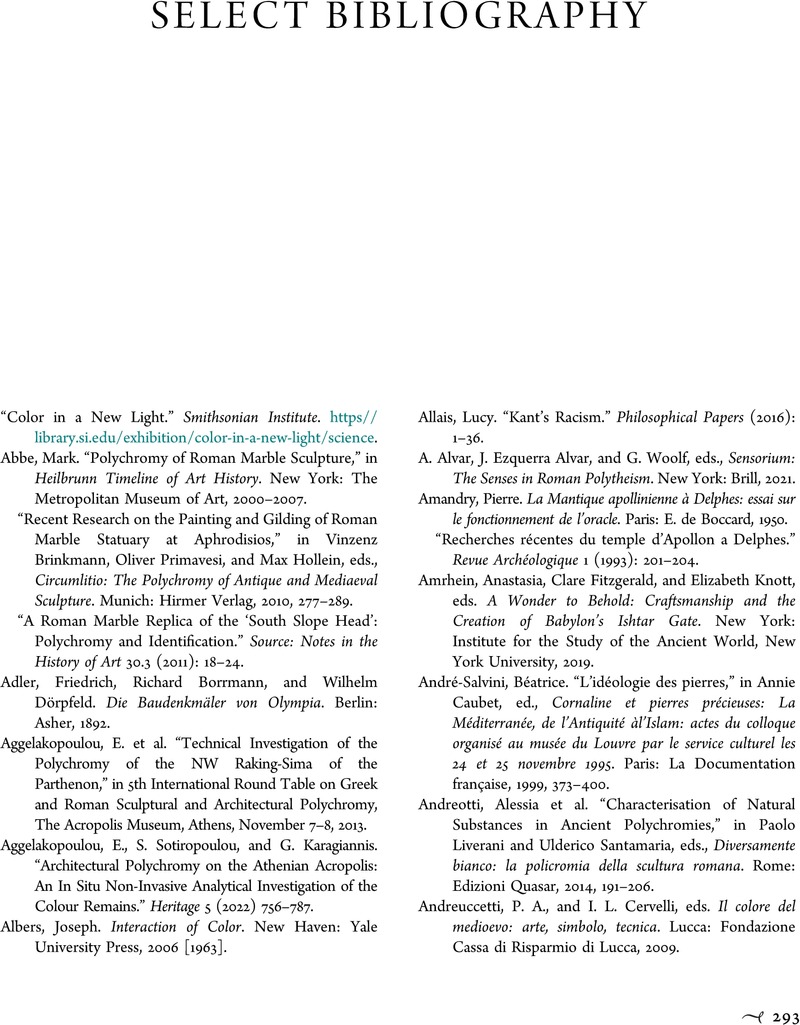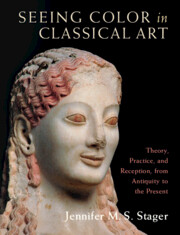Book contents
- Seeing Color in Classical Art
- Seeing Color in Classical Art
- Copyright page
- Dedication
- Contents
- Acknowledgements
- Introduction
- Chapter 1 Material Color, Language, and Khrōma
- Chapter 2 Additive Colors, Kosmēsis, and Care
- Chapter 3 Khōra, Relief, AND Landscape
- Chapter 4 Inlaid Eyes, Effluences, and Opsis
- Chapter 5 Atoms, Lithoi, and Animacy
- Epilogue
- Select Bibliography
- Index
- References
Select Bibliography
Published online by Cambridge University Press: 25 November 2022
- Seeing Color in Classical Art
- Seeing Color in Classical Art
- Copyright page
- Dedication
- Contents
- Acknowledgements
- Introduction
- Chapter 1 Material Color, Language, and Khrōma
- Chapter 2 Additive Colors, Kosmēsis, and Care
- Chapter 3 Khōra, Relief, AND Landscape
- Chapter 4 Inlaid Eyes, Effluences, and Opsis
- Chapter 5 Atoms, Lithoi, and Animacy
- Epilogue
- Select Bibliography
- Index
- References
Summary

- Type
- Chapter
- Information
- Seeing Color in Classical ArtTheory, Practice, and Reception, from Antiquity to the Present, pp. 293 - 316Publisher: Cambridge University PressPrint publication year: 2022



